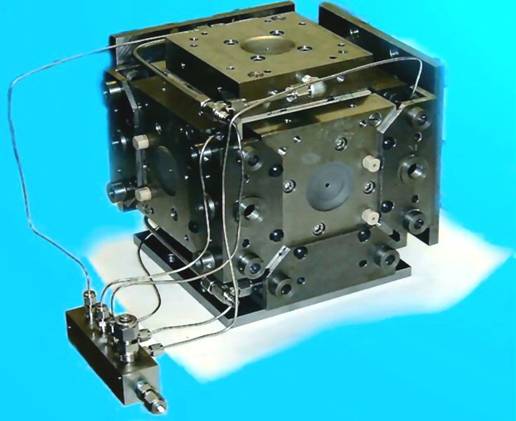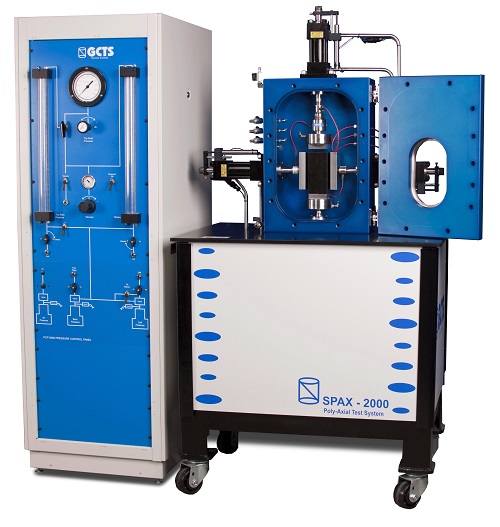Concept
The true triaxial apparatus is a laboratory testing equipment to study the three dimensional stress-strain-strength behavior of soil, for instance in complex stress paths. It is mainly considered as a research laboratory tool for advanced study of mechanical behavior of soil. It the recent years, however, it has been also considered in geotechnical engineering practice.
Description and Procedure
It allows independent control of normal stresses applied in three dimensions to cubical soil samples. The term “true” is used to avoid confusion with conventional triaxial apparatus in which stresses are controlled only along two axes, i.e. axial and lateral confining stresses. The ability of independent control of the parameters in three dimensions, allows for a wider range of loading condition in a true triaxial test. Three general types of true triaxial apparatus are:
- Stress controlled with flexible boundaries
- Strain controlled with rigid boundaries
- Mixed boundary apparatus

 Figure 2. True Triaxial setup (Ref.)
Figure 2. True Triaxial setup (Ref.)
Standards
- NA
References - External Links
- Review of the existing True Triaxial apparatus types and the development description of a true triaxial apparatus Heath S. Williams, Master thesis, Development of a true triaxial apparatus for soil testing, Louisiana State University
- New method for True-Triaxial rock testing,U.S. Department of Energy's (DOE) , W.R. Wawersik, L.W. Carlson, D.J. Holcomb, and RJ. Williams
- True triaxial strength and deformability of the German Continental Deep Drilling Program (KTB) deep hole amphibolite, Chandong Chang and Bezalel Haimson, JOURNAL OF GEOPHYSICAL RESEARCH, VOL. 105, NO. B8, PAGES 18,999-19,013, AUGUST 10, 2000
